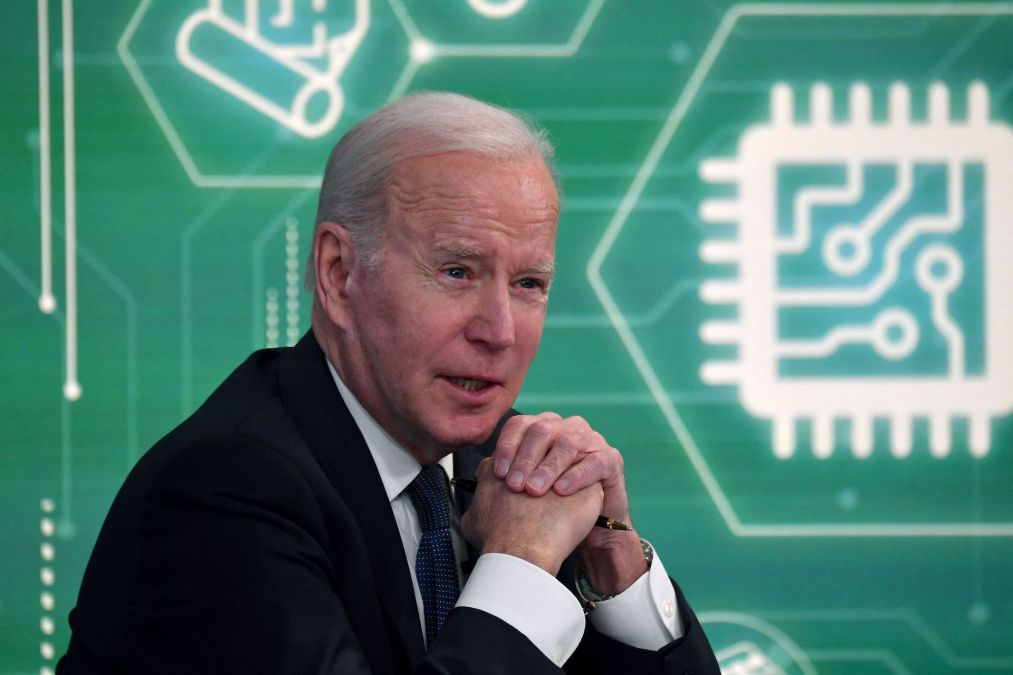Biden puts tech and financial agencies to work in studying ‘central bank digital currency’

President Biden’s executive order on digital assets will create a lot of highly technical work as agencies mobilize quickly to research the risks and benefits of establishing a U.S. “central bank digital currency,” experts and officials say.
The Executive Order on Ensuring Responsible Development of Digital Assets lays out a governmentwide strategy that gives the Office of Science and Technology Policy and U.S. chief technology officer only 180 days to perform a technical evaluation of the potential infrastructure, capacity and expertise agencies need to introduce a central bank digital currency (CBDC) system. The Treasury Department and other agencies are tasked with several evaluations, as well.
Digital assets, including cryptocurrencies, surpassed a $3 trillion market cap worldwide in November with 40 million U.S. adults investing in or using the technology, prompting the aggressive White House effort to rapidly address six priorities: consumer and investor protection, financial stability, illicit finance, U.S. global competitiveness, inclusion, and responsible innovation.
White House officials stressed that establishing a CBDC would put the U.S. in the driver’s seat for ensuring global financial stability by supporting efficient, low-cost transactions and greater access to the financial system — in contrast with privately managed cryptocurrencies. For now, there are many variables to consider, said Sean Frazier, federal chief security officer at Okta, told FedScoop.
“My gut tells me it’s probably going to be a lot of work because agencies are going to have to look at that vis-à-vis all the other currencies they maintain, regulate, monitor and control,” Frazier said. “This has to then be fit into that model, and the challenge for them and the challenge for government is we work on the models of old, more antiquated models, and cryptocurrency is a new, digital technology that does require a lot of digital infrastructure to keep tabs on it.”
Frazier still applauded the “innovative” executive order for bringing cryptocurrency in from the margins, where it’s been rife with fraud and nefarious characters using it as their means to transact untraceably.
While it’s “to be determined” if 180 days is enough time to evaluate the government’s infrastructure for CBDC viability, OSTP should be able to develop “first pass” at a framework, Frazier said.
“I think they picked the right group of folks to do it because these are the forward thinkers; these are the scientists who have been steeped in the technology,” he said. “It’s the same group that’s been working on mobility programs and practices over the last decade.”
The executive order also gives OSTP 180 days to issue a report on the connections between the distributed ledger technology behind cryptocurrencies and economic and energy transitions in the short, medium and long term — a report it must update in a year.
“I think they picked the right group of folks to do it because these are the forward thinkers; these are the scientists who have been steeped in the technology.”
— Sean Frazier, federal chief security officer at Okta
OSTP isn’t the only agency the executive order charges with working toward a CBDC, with the Treasury Department tasked with most of the heavy lifting.
Treasury has 180 days to work with other agencies on report on the future of money and payment systems including their technical innovation, as well as policy recommendations addressing the digital assets sector’s impact on consumers and investors. The executive order gives Treasury 210 days, meanwhile, to convene the Financial Stability Oversight Council to produce a report on addressing the regulatory gaps digital assets have created.
“This approach will support responsible innovation that could result in substantial benefits for the nation, consumers and businesses,” said Treasury Secretary Janet Yellen in a statement. “It will also address risks related to illicit finance, protecting consumers and investors, and preventing threats to the financial system and broader economy.”
Treasury also has 120 days to create a framework for interagency international engagement on the use of digital assets, the Commerce Department 180 days to create a separate framework for enhancing U.S. economic competitiveness in the space and the Department of Justice 90 days to report on strengthening related international law enforcement cooperation.
“As is the case for the digital assets market, innovation and growth tend to be accompanied by emerging challenges,” said Commerce Secretary Gina Raimando in a statement. “As threats to the security and integrity of our financial system scale, the department remains committed to addressing them and supporting our partners across sectors in their anti-money laundering efforts, countering terrorist and other illicit financing, and combatting other abusive activities.”
For its part, DOJ also has 180 days to assess legislative changes needed to issue a CBDC and 210 days to produce a legislative proposal, as well as 180 days to report on the role of law enforcement agencies in detecting, investigating and prosecuting criminal activity.
Sen. Mark Warner, D-Va., praised the “urgency” in studying a central bank digital currency.
“I applaud the executive order’s recognition that maintaining the centrality of the United States in the global financial system – and, in particular, the role of American governance standards and the primacy of the U.S. dollar – is absolutely fundamental to our efforts with regard to digital assets,” Warner said.
‘Organize ourselves with urgency’
A number of other agencies have roles to play in assisting with the development of the reports and other products the executive order requires, among them the: departments of State, Defense, Energy, Labor, and Homeland Security; Environmental Protection Agency; offices of Management and Budget, Director of National Intelligence, and Information and Regulatory Affairs; Council of Economic Advisers; National Science Foundation; U.S. Agency for International Development; and Federal Reserve.
“All of these issues are tied up in the question of whether to issue a digital currency and, if so, how to do so in a way that advances our strategic objectives,” said a senior Biden administration official, on a press call Tuesday. “And so this is a way to organize ourselves with urgency so that we have a coherent and coordinated view on digital assets and that it’s articulated at the very highest level of our government.”
Identity and access management is one component of securing digital assets that’s “conspicuously absent” from the executive order, Frazier said.
But it could be addressed in future executive orders.
“One of the things you need to do to protect digital assets is you need to make sure the right people are getting access to those assets and not the wrong people,” Frazier said.




